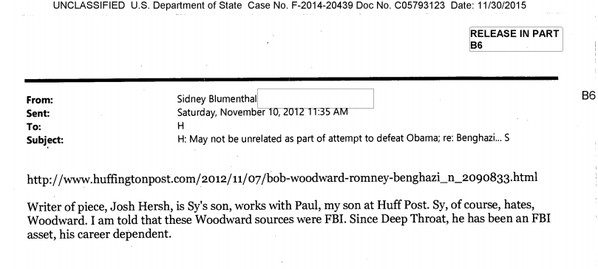The US never really expected Iran to come totally clean about a key element of its nuclear program
BusinessInsider: The Iran nuclear deal will clear a crucial milestone on December 15, when the International Atomic Energy Agency submits a report on the extent of Iran’s previous nuclear-weaponization activities.
The completion of that investigation into the possible military dimensions (PMDs) of Iran’s nuclear program is one of the major prerequisites for the full implementation of the Joint Comprehensive Plan of Action (JCPOA), the landmark nuclear deal that Iran and a US-led group of six countries signed in July.
REUTERS
In theory, the JCPOA won’t be implemented unless Iran complies with a separate “roadmap” agreement with the IAEA. That agreement, which was signed the same day as the JCPOA, lays out the parameters of the agency’s weaponization investigation. The JCPOA isn’t supposed to go into effect unless the sides “fully implement” that roadmap agreement.
But “full implementation” doesn’t really have a fixed meaning within the JCPOA, an agreement that is voluntary and non-binding. And according to an Associated Press analysis out Monday, the IAEA’s investigation is likely going to have inconclusive results.
As the AP notes, the head of the IAEA has “been careful to diminish expectations, describing his upcoming report last week as ‘not black and white.'” And according to the AP, Iranian officials have spoken about the IAEA probe using similar language, “suggesting they already know that the agency’s conclusions won’t be damning.”
Iran has already threatened that it simply won’t comply with the JCPOA if it’s dissatisfied with the IAEA’s report. That might be more than just an empty ultimatum, since according to the AP the announcement is consistent with what Iranian diplomats are saying behind closed doors as well.
“Two Western diplomats familiar with the issue say those same threats have been made in negotiations with IAEA officials,” the AP reported.
The weaponization report is considered crucial to the successful implementation of the nuclear deal, as it will be used to formulate an inspection baseline for Iran’s nuclear program. There is extensive evidence that Iran had a nuclear weapons program until as late as 2003. The IAEA needs to be able to identify key personnel, facilities, supply chains, and past activities to establish exactly how far along Iran’s weaponization activities really are and to recognize whether those activities have been restarted.
But as the AP’s analysis suggests, the roadmap is also contentious — and perhaps even inconvenient, given its potential to interrupt the smooth implementation of a deal that Iran and the US-led group spent nearly two years negotiating. There are already signs that the US wants to get past the investigation as smoothly as possible — even if the IAEA’s “roadmap” doesn’t result in Iran’s full disclosure of its past weaponization work.
Business Insider has obtained a State Department document submitted to congressional offices during the Congress’s review of the JCPOA in July.
The 18-page document, a “verification assessment report” that is essentially the department’s outline of the nuclear deal’s various stipulations, is unclassified. But congressional staffers were only allowed to read it inside of a SCIF, or a special area for viewing and storing classified or compartmentalized information.
The section entitled “Addressing ‘Possible Military Dimensions'” discusses the US’ interpretation of the IAEA “roadmap” and its requirements.
“Iran’s implementation of its commitments under the Roadmap will bring to an end the years-long delay in the IAEA’s ability to address PMD [Possible Military Dimensions] issues,” the document reads.
Two paragraphs later, it explains that even with this high level of confidence that the IAEA investigation will resolve the PMD issue, the US’ standards fall somewhat short of full Iranian disclosure on weaponization-related matters.
“An Iranian admission of its past nuclear weapons program is unlikely and is not necessary for purposes of verifying JCPOA commitments going forward,” the report reads. “US confidence on this front is based in large part on what we believe we already know about Iran’s past activities”
“The United States has shared with the IAEA relevant information, and crafted specific JCPOA measures that will enable inspectors to establish confidence that previously reported Iranian PMD activities are not ongoing,” it continued. “If credible information becomes available regarding any renewed Iranian efforts, it would be shared with the IAEA as appropriate, whether involving previous people, locations, entities, or otherwise. We believe other IAEA member states will do the same.”
This report was circulated in Congress not long after the deal was signed. From a relatively early stage, the State Department believed that the IAEA was capable of monitoring Iran’s nuclear program without Iran fully disclosing its past activities.
This wasn’t because of any particular US trust in the Iranians. Rather, it was due to State’s confidence that US intelligence already knew enough about the extent of Iran’s weaponization program to make such an admission of past weaponization work unnecessary.
Even so, State apparently never expected full Iranian transparency on weaponization. And the Obama administration believed that Iran had no responsibility to admit to a past weaponization program under the JCPOA.
Washington always intended to give Iran a pass on full disclosure — and the result may be a watered-down IAEA investigation that’s treated more as a formality than as an integral element of an arms control agreement designed to last for decades.
The United States has it’s own Task Force, that is IF the White House allows full technology to monitor Iran.
Accounts of rogue state actions and their potential cascading effects;
The impact of advancing technologies relevant to nuclear weapons development;
The growing evidence of networks of cooperation among countries that would otherwise have
little reason to do so;
The implications of U.S. policy statements to reduce the importance of nuclear weapons in international affairs, accompanied by further reductions in numbers, which are leading some longtime allies and partners to entertain development of their own arsenals;
The wide range of motivations, capabilities, and approaches that each potential proliferator introduces.




